Growing food around the world

Different foods need certain conditions to grow.
These are often called their growing conditions.
Heat, humidity, sunlight hours and rainfall all play a part in which foods a country can grow.

Video: Food around the world
Join Aaron to find out how food is grown in different countries around the world.
What do all of these have in common?
Yes! They are all fruits and vegetables.
But each of these are typically grown in different regions of the world.
This apple, for example, was grown in the UK.
But this pineapple was grown in Costa Rica.
Let’s take a look at how the environment and climate can affect the kind of food that can be produced.
Most of the food we eat is farmed. We farm crops like these fruits and vegetables, as well as grains like wheat.
We also farm animals that provide us with meat, dairy products and eggs.
The types of foods that can be farmed in a region depends on the weather and climate.
The climate is the average, long-term weather patterns for a region.
Different regions of the world have different climates.
For example, the UK typically has a temperate climate, which means the temperatures are rarely very hot or very cold.
The UK also has a lot of rain and some sunlight.
This climate means the UK is great for growing some vegetables, like cabbages, carrots and potatoes.
And certain fruits, like apples, pears and strawberries.
The UK’s climate is also good for growing grass, which cattle and sheep graze on in the fields.
Other foods require a different climate to grow well.
Rice, for example, needs long hours of sunshine, high temperatures and lots of water.
There is a lot of rice grown in Thailand, which typically has a tropical climate where the weather is very warm and very wet for much of the year.
Tropical fruits such as avocado and papaya, need lots of sunlight, well-drained soil and a warm climate. This is why they are often grown in countries like Mexico.
And a lot of cassavas and yams are grown in the warm and sunny climate of parts of Nigeria.
So, while we can get many of these foods in our local shops, they have often been grown in different countries around the world, with different climates.
So, next time you eat a fruit or vegetable, think about where it may have been grown.
Weather and climate
The WeatherWeather refers to the short-term conditions of a place. It could be raining today, but sunny tomorrow. Weather can change over minutes or hours. and ClimateClimate refers to the long-term conditions of a place. This will be the average weather over many years. are two factors that can determine the types of food that a country can grow naturally.
The weather refers to the short-term conditions of an area. For example, it could be rainy today, but it might be sunny tomorrow.
The climate describes the average weather conditions of an area over a longer period of time, such as 30 years. A country’s climate depends on where it is in the world.
Countries close to the EquatorAn imaginary line that runs around the middle of the Earth. It divides the Earth into the northern hemisphere and the southern hemisphere. receive a lot of sunlight and tend to be warmer than those further away from the equator.
Countries closer to the ocean tend to be milder than countries that are inland and they also tend to be windier.
Food grown in different climates
Here are some examples of foods that are grown in certain countries because of their weather and climate.
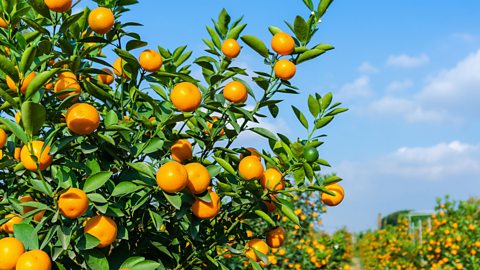
Image caption, Oranges
Oranges grow well in warm and sunny places, like Valencia in Spain.
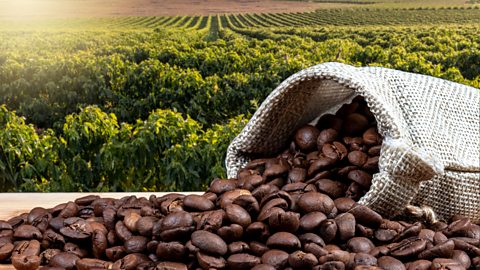
Image caption, Coffee
Coffee needs warm, tropical conditions to grow well, like in Brazil.
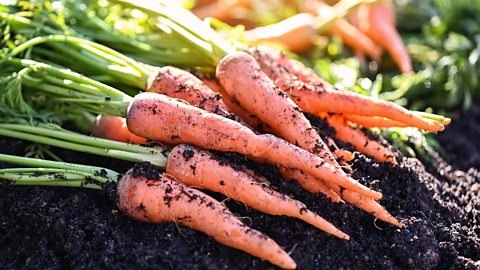
Image caption, Carrots
Carrots need sunny but not tropical conditions to grow well. They are grown in many countries including the UK, China and the USA.
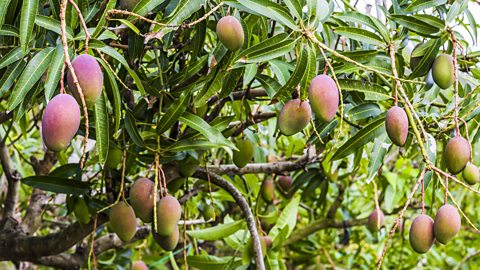
Image caption, Mangoes
Mangoes are grown in countries with a tropical climate, like India.
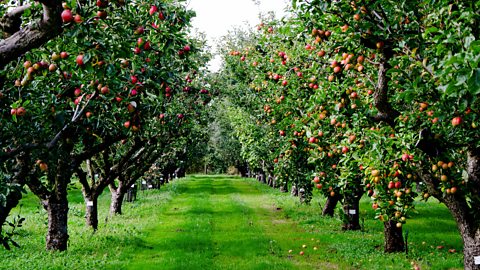
Image caption, Apples
Apples grow well in countries where it is colder in the winter and warm in the summer, like in the UK.

Image caption, Pineapples
Pineapples need warm, sunny conditions and not much rain, like in Costa Rica.
1 of 6
Staple foods
The types of food a country can grow will impact on what the people living there will eat in their everyday diet. These are known as staple foods.
People tend to eat the staple foods in their country more often because they are easily grown locally and are readily available.
This is why countries have 'traditional dishes' that are often based on these staple foods.
You can find out more about some staple foods and traditional dishes below.
Growing methods
Food can be grown in many different ways.
Pests can destroy crops when they are growing and some farmers use Pesticides and insecticidesChemicals used to repel pests away from crops or kill pests so they do not damage crops. to stop these pests from damaging their crop.
Some farmers grow crops without using these chemicals and this is referred to as organic growing.
Food can also grow in large greenhouses. By growing food in this way, the grower can create the perfect conditions for that particular food.
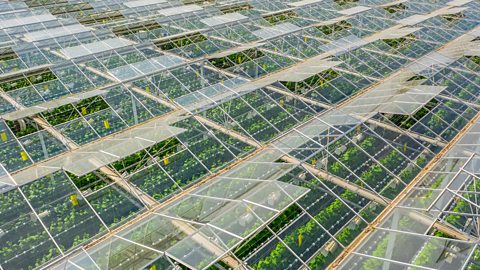
Hydroponics
Food doesn’t always have to be grown in soil.
In fact, some foods are grown in water, such as tomatoes, strawberries and lettuce. This system is called HydroponicsA method of growing plants where soil is replaced with water, which carries nutrients to the plants.
This means that the foods can grow quicker and use less space when compared to foods grown in soil.
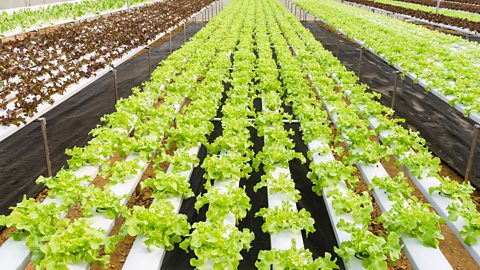
Key words
| Weather | The short-term conditions of a place. It could be raining today, but sunny tomorrow. Weather can change over minutes or hours. |
| Climate | The long-term conditions of a place. This will be the average weather over many years. |
| Equator | An imaginary line that runs around the middle of the Earth. It divides the Earth into the northern hemisphere and the southern hemisphere. |
| Pesticides and insecticides | Chemicals used to repel pests away from crops or kill pests so they do not damage crops. |
| Hydroponics | A method of growing plants where soil is replaced with water, which carries nutrients to the plants. |
Quiz: How is food grown around the world?
How much do you know about how food is grown in different countries?
More on Cooking and nutrition
Find out more by working through a topic
- count9 of 13
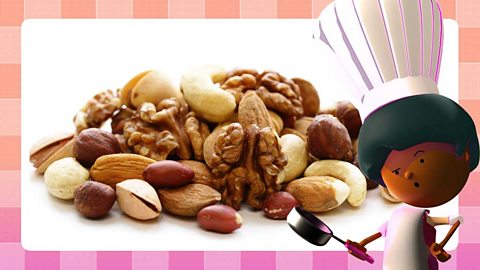
- count10 of 13

- count11 of 13
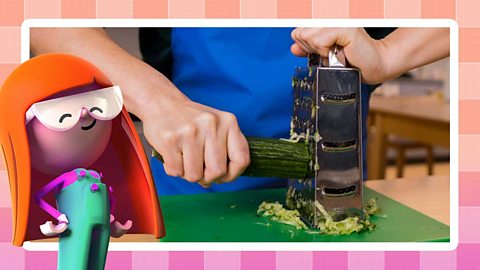
- count12 of 13
